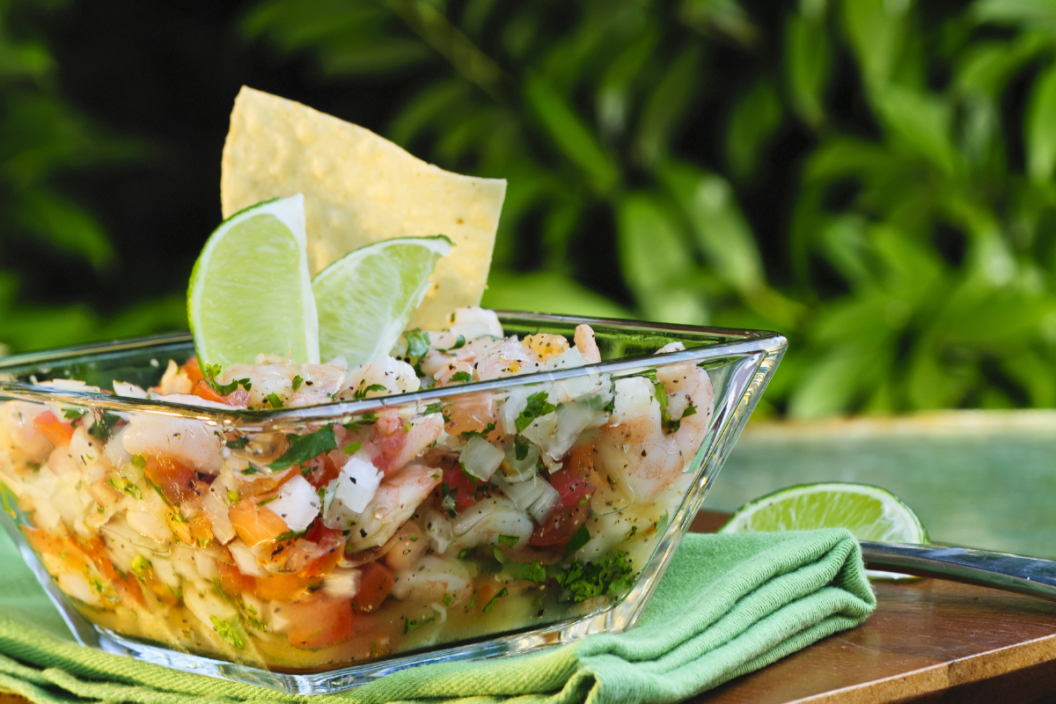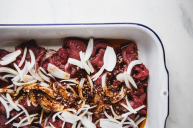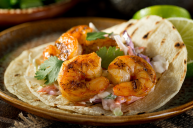Few things sound as good on a sweltering hot summer day as a fresh bowl of ceviche. One bite and you'll feel like you're vacationing in a tropical paradise somewhere in Peru or Mexico, far away from your cozy kitchen in America. . While we may not all have the luxury of basking in the sun on a white sand beach with turquoise water, we can bring a taste of the island home with some fish ceviche.
Fish ceviche is an incredibly easy and popular dish to make. I usually opt for chopped red onion, tomatoes, serrano chiles, lime, black pepper, sea salt, and white fish - actually, it's not far off from my pico de gallo. While there are various styles like Peruvian, Caribbean, Pacific, or Mexican ceviche, as long as you use fresh fish, your recipe will be a hit.
If you've never prepped it, however, it can sound rather intimidating. What raw fish should you use? How long does it marinate in citrus juice? What about food poisoning? Is it cooked enough? Is it over cooked?
Don't worry, we're here to guide you. While this dish is insanely easy, there are a few things to consider when throwing it all together. From what fish to buy right down to the marinating time, these are the tricks you need to know when perfecting your ceviche recipe.
Choosing the Right Fish for Ceviche
https://www.instagram.com/p/BM8pI9Mhp9z/?tagged=fishcounter
Before you can even delve into the marinating process, you have to select a fish that works for raw seafood ceviche. Ideally, this would be the freshest fish that you just reeled in off the boat. For most of us however, this is a fish bought from the local fishmonger. Shellfish are popular for a shrimp ceviche, conch ceviche, and crab ceviche, but we'll look more closely at the fish types you need for a great ceviche.
When choosing your selection, a semi-firm white fish is the best choice for ceviche. This includes fish like sea bass, snapper, striped bass, grouper, mahi-mahi, and flounder. While delicious in their own right, oily and freshwater fish don't make for the best ceviche.
Remember, ceviche is cooked by citric acid, so you want something that won't fall apart, but can also be broken down by the acid.
Use Only Fresh Fish
When you've selected your type of catch, freshness is key. The next best thing to a fresh-caught fish is the freshest fish the store has to offer. This is where your eyes and nose come into play. The flesh of the fish should look firm and translucent.
If the fillets are starting to fall apart or the flesh appears opaque, skip it. If you're using whole fish, look the fish dead in the eyes. The eyes should be glossy and clear. The fish should also not smell, well, fishy. The ocean is salty which means the fish should smell briny. Fish that stinks means it's a no-go.
Put It on Ice
If you're not going to prepare your ceviche immediately, then put it on ice. This doesn't just mean on the trip home from the store. By keeping it on ice, you're guaranteeing that the fish stays fresh.
Wrap the fish then toss it in a Ziploc bag or a bowl of ice and place it in the fridge. Refrigerator temperatures vary, so by keeping it on ice in the fridge, you ensure that it's cold enough. This will preserve the flavor along with the texture.
Remove Skin, Bones, and Bloodline
When you can, have your local fishmonger remove any skin, bones, or bloodline that may be on your filet. If not, be sure to do this yourself.
Biting into a bone or skin when eating ceviche isn't pleasant - neither is the bloodline. While some fish recipes may call for leaving the skin on, this isn't one of them.
Prepping
This step is highly important: If you're prepping the produce along with the fish, don't combine them until the fish is done marinating. Keeping them separate will keep the produce crisp and allow the fish to be fully infused with the citrus.
Ceviche Marinade
In order to "cook" your fish using the citrus chemical process to kill bacteria, you'll need the acid of a citrus fruit. Fresh lime juice, lemon juice, and even grapefruit juice can be used. Which fruit you choose all depends on your recipe and palate.
The most important thing to keep in mind when cooking your fish is that the longer it sits, the more it cooks. The acid will begin to breakdown the protein of the fish as it infuses it with flavor. There are some recipes out there that will call for the fish to rest for hours. If you like your fish mushy and over done, then that's fine. Otherwise, a total time of 15 minutes is usually your answer.
Consider cooking your fish like you cook your steak. You want the outside to be cooked while the center is still rare. As long as you stay in the 10-25 minutes time range, your semi-firm fish will be cooked to perfection.
Ceviche Pairings
Pairing your fresh fish is easy when you take into account the citrus you used. Ceviche is usually served with cubed vegetables and fruit, typically water-based, to accompany the fresh fish.
If you're going for a South American style, pair with plantain chips, corn kernels, sliced onions, and ground black pepper for a beautiful South American dish. If you're going for a South Florida style, consider marinating your fish in juice from key limes. You might do a shrimp, avocado, lime juice, jalapeño and fresh cilantro appetizer served with tortilla chips. Take into account each region's native flavors to incorporate into the dish as a whole; there's no limit to the flavor combos.
There you have it. Now you're ready to master the art of ceviche. Oh, and one last piece of advice, when the ceviche is ready, serve it immediately. If it sits around the citrus will keep breaking down your fish and your stellar ceviche will become sub-par.
This article was originally published on March 10, 2018.




